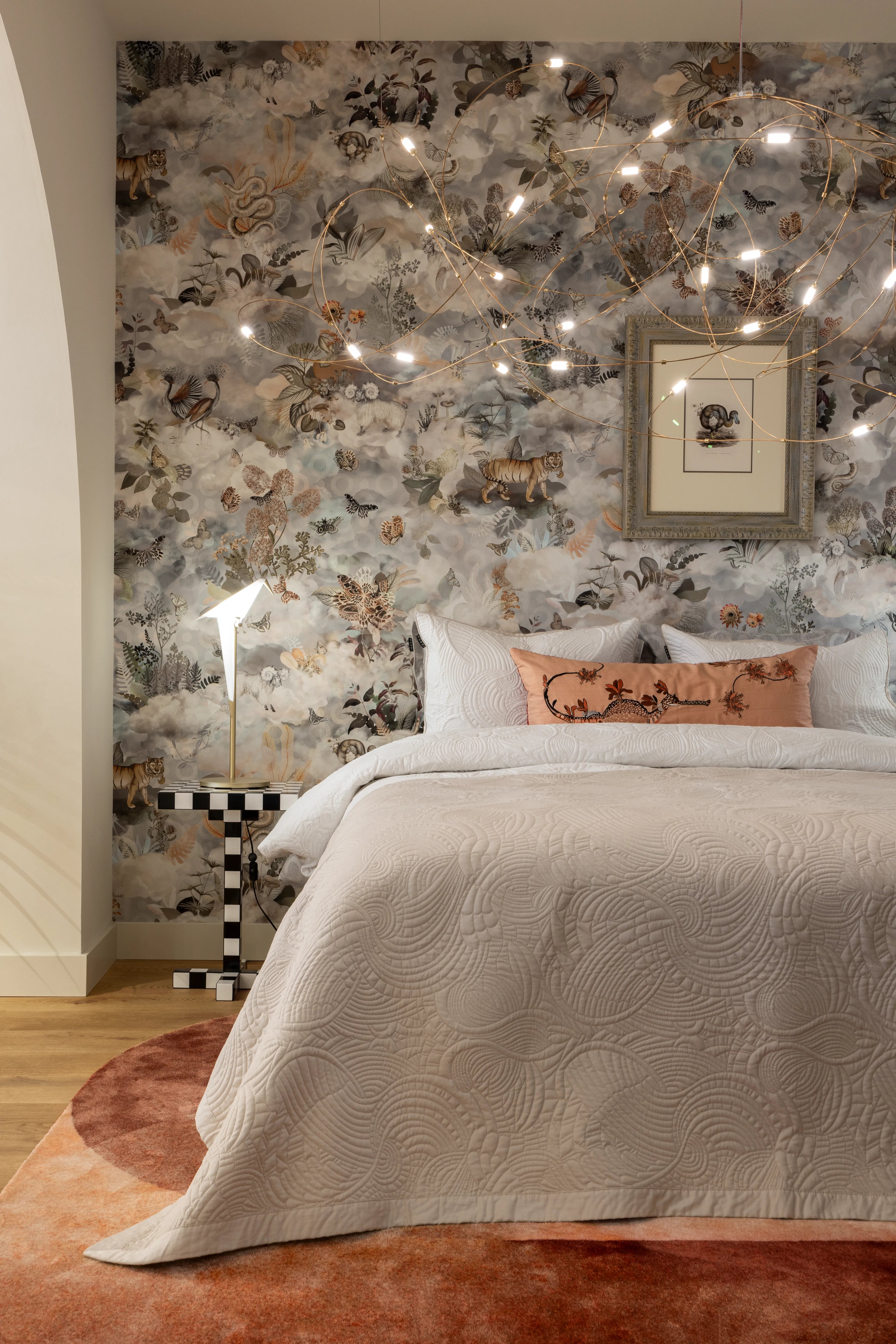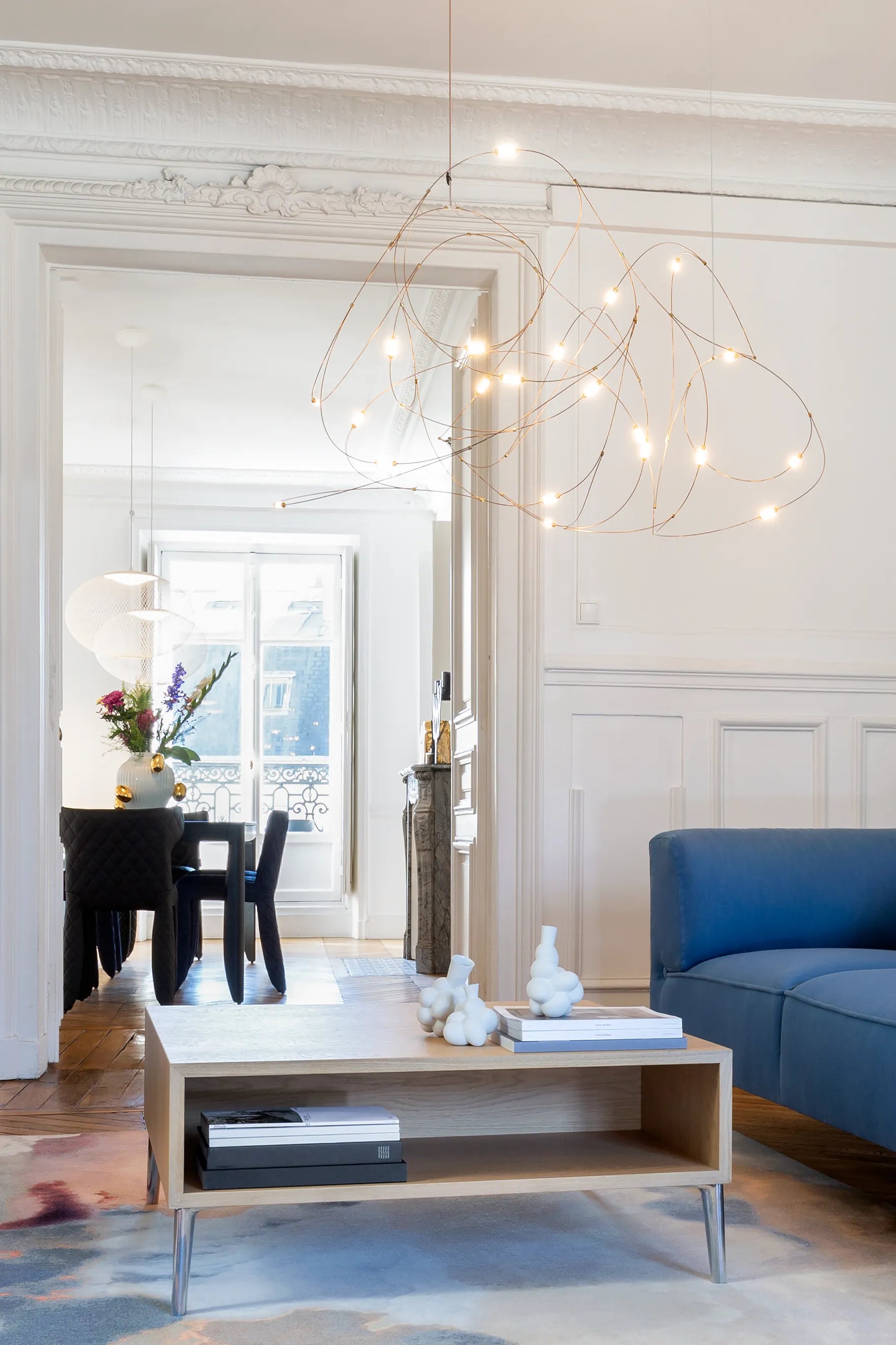Lighting Dimensions and installation Guide
How to Calculate the Right Size Light Fixture for a Room
When selecting a light fixture, you need to ensure it's appropriately scaled to the room size. The wrong size can affect both aesthetics and functionality. Here are professional guidelines to help determine the correct light fixture size:
Lighting is not only functional but also a key design element in any room. Choosing the right size light fixture is essential for balancing the overall design of the room and ensuring adequate illumination. In this guide, we’ll cover how to calculate the ideal size for light fixtures based on room dimensions and provide room-specific tips for all types of lighting, including chandeliers, pendants, flush mounts, sconces, and more.
1. General Formula for Fixture Diameter
- Measure the length and width of the room (in feet).
- Add these two numbers together.
- Convert the total sum to inches. This number will give you the ideal diameter of the light fixture.
For a room that is 12 feet wide and 14 feet long, you would add 12 + 14 = 26 feet.
Convert this to inches (26 inches), so the recommended diameter for a chandelier or pendant light would be around 26 inches.

2. Height of a Light Fixture
- Measure the height of the room (in feet).
- Multiply the height by 2.5 to 3 inches. This range provides the appropriate height for the fixture.
In a room with a 10-foot ceiling: 10 x 2.5 to 3 inches = 25-30 inches in fixture height.
3. Hanging Height of Fixtures
- Above a Dining Table: Hang the fixture about 32 to 36 inches above the table surface.
- Above a Kitchen Island: Pendants should be hung 32 to 36 inches above the countertop for optimal task lighting.

4. Multiple Pendants
If you're hanging multiple pendants above a kitchen island or a long dining table, the general rule is that each fixture should be about 1/4 the length of the surface below.
Lighting Guide by Room Type
| Room Type | Recommended Fixture Size | Types of Lighting to Consider | Hanging Height and Spacing Tips |
|---|---|---|---|
| Living Room | Length + Width (in feet), convert to inches for diameter. | Chandeliers, pendant lights, flush mounts, floor lamps, table lamps. | Chandeliers and pendants should hang 7 feet above the floor. Flush mounts work best for rooms with lower ceilings. |
| Dining Room | Fixture should be 1/2 to 2/3 the width of the dining table. | Chandeliers, linear pendants, wall sconces. | Hang chandeliers or pendants 32-36 inches above the table. Consider multiple pendants for longer tables. |
| Kitchen | Each pendant should be 1/4 the length of the island or counter. | Pendant lights, recessed lights, under-cabinet lighting, track lighting. | Pendants 32-36 inches above countertop. Space multiple pendants evenly. |
| Bedroom | Length + Width (in feet), convert to inches for diameter. | Flush mounts, semi-flush mounts, bedside lamps, wall sconces, floor lamps. | Bedside lamps at eye-level seated. Use flush/semiflush for ambient light; sconces for tasks. |
| Bathroom | Use the room dimension formula for general ceiling lights. | Vanity lights, sconces, flush mounts, recessed lights. | Sconces at 65-70 in. from floor, 24 in. above mirrors for task lighting. |
| Entryway/Hallway | Length + Width formula for entryways. In halls, space lights evenly. | Chandeliers, flush mounts, wall sconces. | Chandeliers in entryways at least 7 ft. from floor. In halls, lights every 8-10 ft. |
| Home Office | Room dimension formula for general lighting. Desk lamps for tasks. | Flush mounts, desk lamps, recessed lights, task lighting. | Desk lamps for focused work. Recessed or track lighting for larger spaces. |
Detailed Room-by-Room Installation Tips
Living Room
- Chandeliers and Pendants: Use the room dimension formula for size. Hang so there’s at least 7 feet between the fixture and floor.
- Task Lighting: Table and floor lamps add layers of light. Floor lamps should be proportional to adjacent furniture.
Dining Room
- Chandeliers: Diameter should be 1/2 to 2/3 the table width.
- Multiple Pendants: For long tables, evenly space smaller pendants above.
Kitchen
- Pendants Over Island: Hang 32-36 inches above the surface. Each pendant should be about 1/4 the island length.
- Under-cabinet Lighting: Provides essential counter illumination and task lighting.

Bedroom
- Ceiling Fixtures: Use the room dimension formula for correct scale. Semi- or flush mounts are best for ambient light; sconces and bedside lamps for tasks.
- Task Lighting: Bedside lamps or sconces should be at eye-level when seated and proportional to furniture.
Bathroom
- Vanity Lighting: Place sconces on either side of the mirror, 65-70 inches from floor and spaced for even light.
- Ceiling Fixtures: Use the room formula for flush mounts or recessed lights for general lighting.
Entryway
-
Chandeliers: A statement fixture works well in entryways. Use the length + width formula for diameter. Hang so there’s at least 7 feet from floor to fixture bottom.




